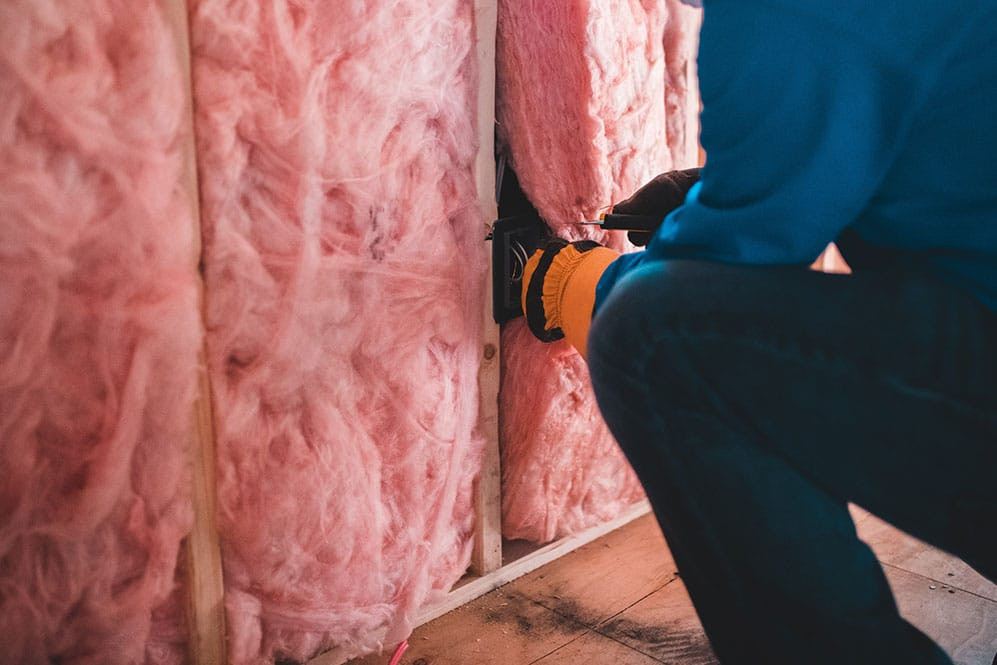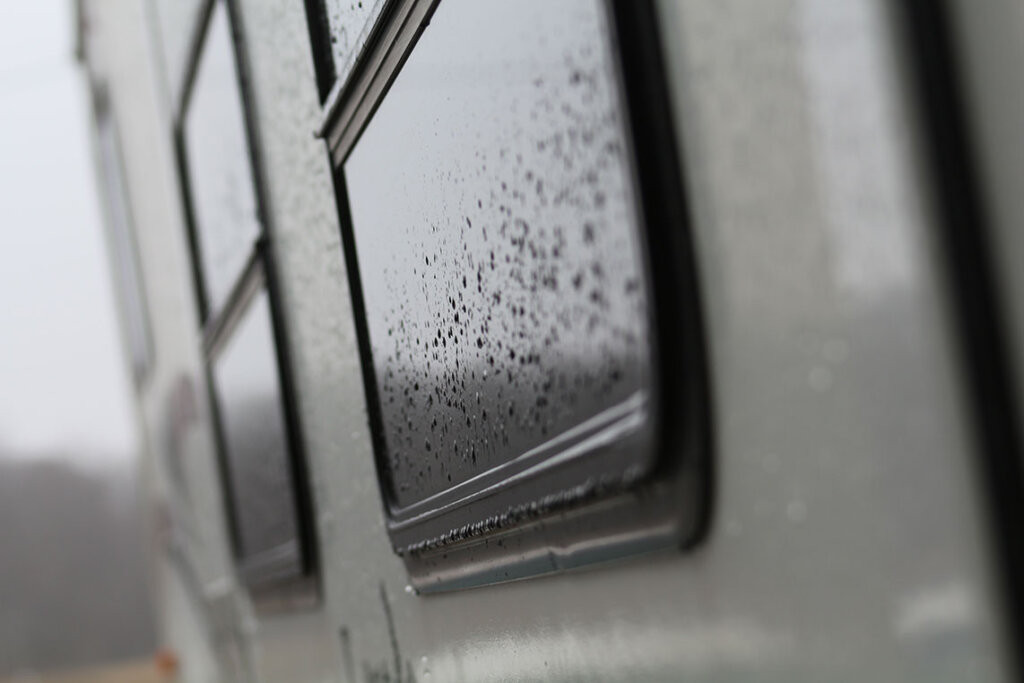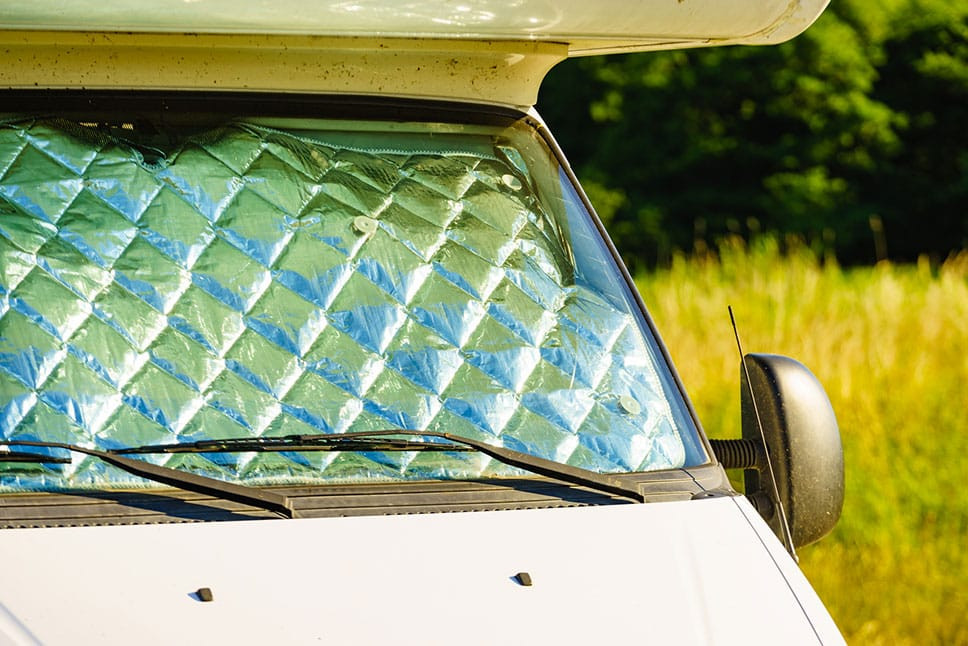Insulating a travel trailer can make a huge difference in your comfort and energy savings, especially when exploring beautiful Vietnam with SIXT.VN. This comprehensive guide provides everything you need to know about camper trailer insulation, ensuring you stay cool in the summer heat and warm during the cooler months. Learn how to improve your RV’s energy efficiency and create a cozy travel experience with these mobile home weatherization tips.
1. Why Is Insulation Important for Your Travel Trailer?
Insulation is key to maintaining a comfortable temperature inside your RV or camper, regardless of the weather outside. Proper insulation not only keeps you warm in the winter and cool in the summer but also reduces energy consumption. According to research from the U.S. Department of Energy, proper insulation can reduce heating and cooling costs by up to 20%.
1.1. Benefits of Insulating Your Travel Trailer
Insulating your camper offers numerous benefits:
- Temperature Control: Maintains a comfortable interior temperature, reducing the need for constant heating or cooling.
- Energy Efficiency: Lowers energy consumption, saving money on electricity or propane costs.
- Noise Reduction: Reduces external noise, creating a quieter and more peaceful environment inside.
- Moisture Control: Helps prevent condensation and moisture buildup, reducing the risk of mold and mildew.
- Increased Comfort: Enhances overall comfort, making your travel trailer a more enjoyable space.
2. Understanding R-Value: The Key to Effective Insulation
R-value is a measure of thermal resistance, indicating how well a material resists heat flow. The higher the R-value, the better the insulation. Choosing the right R-value is crucial for effective insulation.
2.1. What is R-Value?
R-value measures a material’s ability to resist heat transfer. A higher R-value means better insulation.
According to the U.S. Department of Energy, recommended R-values vary by climate zone, with colder regions requiring higher R-values.
2.2. Recommended R-Values for Travel Trailers
For travel trailers, aim for the following R-values:
- Walls: R-7 to R-13
- Floor: R-10 to R-20
- Ceiling: R-20 to R-30
These values provide a good balance of insulation without adding excessive weight or thickness.
2.3. Factors Affecting R-Value
Several factors can affect the R-value of insulation:
- Material Type: Different materials have varying R-values per inch of thickness.
- Thickness: Thicker insulation generally provides a higher R-value.
- Installation Quality: Gaps or compression can reduce the effective R-value.
- Moisture: Moisture can significantly reduce the R-value of some insulation types.
3. Types of Insulation for Travel Trailers
Choosing the right type of insulation is crucial for achieving optimal results. Here are some common options:
3.1. Fiberglass Insulation
Fiberglass is a common and affordable insulation material made from spun glass fibers.
 Fiberglass RV Insulation
Fiberglass RV Insulation
- Pros:
- Affordable and widely available
- Good soundproofing properties
- Easy to install
- Cons:
- Can be an irritant to skin and lungs, requiring protective gear
- Susceptible to moisture, which reduces its R-value
- May settle over time, reducing its effectiveness
3.2. Rigid Foam Board Insulation
Rigid foam board insulation comes in sheets and is made from materials like polystyrene or polyisocyanurate.
- Pros:
- High R-value per inch of thickness
- Resistant to moisture
- Durable and long-lasting
- Cons:
- More expensive than fiberglass
- Can be challenging to cut and fit into irregular spaces
- May require sealing to prevent air leaks
3.3. Spray Foam Insulation
Spray foam is applied as a liquid and expands to fill gaps and cracks, creating an airtight seal.
- Pros:
- Excellent R-value and airtight seal
- Fills hard-to-reach spaces
- Reduces air leaks and drafts
- Cons:
- More expensive than other options
- Requires professional installation for best results
- Can be messy and difficult to remove
3.4. Reflective Insulation (Radiant Barrier)
Reflective insulation consists of a reflective material, such as aluminum foil, bonded to a backing material.
- Pros:
- Effective at reflecting radiant heat
- Lightweight and easy to install
- Can be used in conjunction with other insulation types
- Cons:
- Less effective in cold climates
- Requires an air gap to function properly
- Does not provide significant conductive insulation
3.5. Denim Insulation
Denim insulation is made from recycled denim and is an environmentally friendly option.
- Pros:
- Made from recycled materials
- Good soundproofing properties
- Easy to handle and install
- Cons:
- Can be more expensive than fiberglass
- May require treatment to prevent mold and pests
- Lower R-value compared to some other options
4. Step-by-Step Guide: How to Insulate a Travel Trailer
Insulating your travel trailer can be a DIY project, but it requires careful planning and execution. Here’s a step-by-step guide:
4.1. Assess Your Travel Trailer
Before starting, assess your travel trailer to identify areas that need insulation:
- Inspect Walls, Floor, and Ceiling: Look for gaps, cracks, and signs of moisture.
- Check Windows and Doors: These are common areas for air leaks.
- Evaluate Existing Insulation: Determine if the current insulation is adequate or needs replacement.
4.2. Gather Your Materials and Tools
Collect the necessary materials and tools:
- Insulation Material: Choose the type of insulation that best fits your needs.
- Safety Gear: Gloves, mask, eye protection, and protective clothing.
- Tools: Utility knife, measuring tape, caulk gun, sealant, staple gun, and adhesive.
4.3. Insulate Walls
Follow these steps to insulate the walls:
- Remove Interior Panels: Carefully remove the interior panels to access the wall cavities.
- Clean the Cavities: Remove any debris, old insulation, or signs of mold.
- Measure and Cut Insulation: Measure the cavities and cut the insulation to fit snugly.
- Install Insulation: Place the insulation into the cavities, ensuring it fills the space completely.
- Seal Gaps: Use caulk or sealant to seal any gaps or cracks around the insulation.
- Reinstall Interior Panels: Carefully reinstall the interior panels.
4.4. Insulate the Floor
Insulating the floor can significantly improve comfort:
- Access the Subfloor: Depending on your travel trailer, you may need to access the subfloor from underneath.
- Clean the Area: Remove any debris and ensure the area is dry.
- Measure and Cut Insulation: Measure the spaces between the floor joists and cut the insulation to fit.
- Install Insulation: Install the insulation, securing it with staples or adhesive.
- Seal Gaps: Use caulk or sealant to seal any gaps or cracks.
4.5. Insulate the Ceiling
Insulating the ceiling is crucial for preventing heat loss in the winter and heat gain in the summer:
- Remove Ceiling Panels: Carefully remove the ceiling panels to access the ceiling cavity.
- Clean the Cavity: Remove any debris and old insulation.
- Measure and Cut Insulation: Measure the cavity and cut the insulation to fit.
- Install Insulation: Place the insulation into the cavity, ensuring it fills the space completely.
- Seal Gaps: Use caulk or sealant to seal any gaps or cracks.
- Reinstall Ceiling Panels: Carefully reinstall the ceiling panels.
4.6. Insulate Windows and Doors
Windows and doors are common areas for air leaks. Here are some ways to insulate them:
4.6.1. Sealing Windows
After giving your window a once-over with caulk to make sure the edges are airtight, take a moment to examine how many panes of glass your RV windows have. Many campers come standard with single-pane windows that do not perform well in regards to thermal transfer.
A simple and cheap method to combat these drafty single-pane windows involves using clear plastic film to create a faux windowpane. This film sits tight against the window frame and creates a sealed air pocket that resists thermal exchange better than a single pane of glass.
 camper windows
camper windows
4.6.2. Insulated Window Curtains
Some RV brands are now selling insulated window curtains that can keep your camper comfortable without compromising privacy. These curtains achieve insulation excellence by blocking the sun’s radiant energy and can be bought or made without too much trouble.
If you’re not too worried about the aesthetics of your insulated window curtains and want something DIY, a thick piece of cardboard or a sheet of Reflectix cut-to-fit will achieve many of the same goals.
 Insulated RV Window Curtains
Insulated RV Window Curtains
4.6.3. Weather Stripping
Apply weather stripping around the edges of doors and windows to create a tight seal.
4.6.4. Window Film
Apply insulating window film to reduce heat transfer through the glass.
4.6.5. Insulated Curtains or Blinds
Use insulated curtains or blinds to provide an extra layer of insulation.
4.6.6. Consider Upgrading Your Windows
If you have the money and desire to really invest in your RV windows, consider upgrading to multi-pane windows. Multi-pane windows essentially have two or more glass panes with a pocket of harmless argon gas trapped between them. The argon gas creates an air barrier resistant to thermal exchange and will prevent cold air from leaking inside your camper during those chilly winter nights.
This is essentially a more efficient and permanent version of using plastic insulating film to seal your windows.
4.7. RV Skirts
Drive by any RV park during the long winter months and I guarantee you will see many of the campers there outfitted with RV skirts.
An RV skirt is a barrier that prevents cold air from hanging out and blowing underneath your trailer’s weak parts.
These skirts can be made from just about anything, but you’ll typically find them pieced together with scrap plywood or sheets of rigid foam. You can also buy fabric skirts that will fit many styles of campers, or even have one custom-made for your camper.
When constructing your own skirt, keep in mind the principles of air exchange. Creating a nicely sealed pocket of air under your rig will result in a significant heat reduction loss through your floor. This in turn will save you money as it will require much less fuel to keep your camper toasty through the winter.
Before you start to construct your own RV skirt, check the policy of the site you are camped at. Some parks and campgrounds have strict rules regarding skirts and the building of permanent or semi-permanent structures.
4.8. Seal Air Leaks
Sealing air leaks is crucial for maximizing the effectiveness of your insulation:
- Identify Air Leaks: Use a smoke pencil or your hand to detect drafts around windows, doors, and other openings.
- Seal Gaps and Cracks: Use caulk or sealant to seal any gaps or cracks you find.
- Pay Attention to Wiring and Plumbing: Seal around any areas where wiring or plumbing enters the travel trailer.
5. Additional Tips for Insulating Your Travel Trailer
Here are some additional tips to enhance your insulation efforts:
5.1. Use Reflective Bubble Wrap
Reflective bubble wrap can be used to insulate storage compartments and other areas.
5.2. Insulate Water Lines
Insulate water lines to prevent freezing in cold weather.
5.3. Use a Dehumidifier
Use a dehumidifier to control moisture levels inside the travel trailer.
5.4. Park Strategically
Park your travel trailer in the shade during hot weather to reduce heat gain.
 Protecting RV Against Cold Weather
Protecting RV Against Cold Weather
5.5. Door Snake
A door snake is essentially any piece of fabric or foam that you can place along the bottom edge of your RV door to block cold air and retain heat. I’ve most commonly seen people use rolled-up towels or tubes of fabric filled with dry beans as door snakes.
5.6. Vent Cover
Despite the importance of having roof ventilation, a roof vent can be a big source of cold air leakage. A vent cover will prevent cold drafts in a similar way to a door snake.
5.7. Insulate Exterior Compartments
Many RVs feature exterior storage compartments for gear. While handy, these compartments are often uninsulated and can have a large impact on the thermal exchange within your camper. Putting some rigid foam insulation against the ceiling and walls of these compartments can be a game-changer, especially if the compartment is located directly underneath your bed. If you have a Rear Folding Camper, it may be worth throwing an additional layer of rigid foam in between your truck bed and the camper.
6. Maintaining Your Insulated Travel Trailer
Proper maintenance ensures your insulation remains effective:
6.1. Inspect Regularly
Regularly inspect your insulation for signs of damage or moisture.
6.2. Address Issues Promptly
Address any issues, such as leaks or damaged insulation, promptly to prevent further problems.
6.3. Keep Vents Clear
Keep vents clear to ensure proper ventilation and prevent moisture buildup.
6.4. Re-Seal as Needed
Re-seal any gaps or cracks that may develop over time.
7. Traveling in Vietnam: Why You Need Good Insulation
Vietnam’s diverse climate, from the tropical south to the cooler north, makes insulation crucial for a comfortable travel experience. A well-insulated travel trailer ensures you stay cool in the heat and warm in the mountains.
7.1. Climate Considerations
- Northern Vietnam: Experiences cooler temperatures, especially in the winter months.
- Central Vietnam: Has a tropical monsoon climate with hot, humid summers and mild winters.
- Southern Vietnam: Features a tropical climate with consistently warm temperatures.
7.2. Choosing the Right Insulation for Vietnam’s Climate
For Vietnam, consider insulation that provides both heat and moisture resistance. Rigid foam board and spray foam insulation are excellent choices due to their high R-value and moisture resistance.
8. SIXT.VN: Your Partner for Comfortable Travel in Vietnam
Planning a trip to Vietnam? SIXT.VN offers a range of services to make your journey comfortable and convenient.
8.1. Travel Consulting
Let SIXT.VN help you plan your perfect itinerary, tailored to your interests and schedule.
8.2. Airport Pick-Up
Arrive in Vietnam stress-free with SIXT.VN‘s reliable airport pick-up service.
8.3. Hotel Booking
Find the perfect accommodation with SIXT.VN‘s extensive selection of hotels.
8.4. Tour Booking
Explore Vietnam’s iconic landmarks and hidden gems with SIXT.VN‘s expertly guided tours.
8.5. Flight Booking
Book your flights with ease through SIXT.VN, ensuring a smooth and affordable travel experience.
8.6. Contact Information
- Address: 260 Cau Giay, Hanoi, Vietnam
- Hotline/Whatsapp: +84 986 244 358
- Website: SIXT.VN
9. FAQs About Insulating a Travel Trailer
9.1. What is the best type of insulation for a travel trailer?
The best type of insulation depends on your budget, climate, and DIY skills. Rigid foam board and spray foam are excellent choices for their high R-value and moisture resistance.
9.2. How much does it cost to insulate a travel trailer?
The cost varies depending on the size of the travel trailer and the type of insulation used. DIY projects can range from $500 to $1500, while professional installation may cost $2000 or more.
9.3. Can I insulate my travel trailer myself?
Yes, insulating a travel trailer can be a DIY project, but it requires careful planning and execution. Make sure to follow safety precautions and use the right tools and materials.
9.4. How do I find air leaks in my travel trailer?
Use a smoke pencil or your hand to detect drafts around windows, doors, and other openings. You can also use a thermal camera to identify areas of heat loss.
9.5. What R-value should I aim for in my travel trailer?
Aim for R-7 to R-13 for walls, R-10 to R-20 for the floor, and R-20 to R-30 for the ceiling.
9.6. How can I improve the insulation of my windows?
Apply weather stripping, insulating window film, or use insulated curtains or blinds. Consider upgrading to multi-pane windows for better insulation.
9.7. What is the best way to seal gaps and cracks in my travel trailer?
Use caulk or sealant to seal any gaps or cracks around windows, doors, and other openings.
9.8. How often should I inspect my insulation?
Inspect your insulation regularly for signs of damage or moisture, especially after extreme weather conditions.
9.9. Can insulation help reduce noise in my travel trailer?
Yes, insulation can help reduce external noise, creating a quieter and more peaceful environment inside your travel trailer.
9.10. Is it worth insulating my travel trailer?
Yes, insulating your travel trailer is worth the investment. It improves comfort, reduces energy consumption, and protects against moisture and mold.
10. Conclusion
Insulating your travel trailer is a worthwhile investment that enhances comfort, saves energy, and protects against the elements. Whether you’re planning a cross-country adventure or a weekend getaway, proper insulation ensures a more enjoyable and comfortable travel experience. Remember to leverage the expertise of SIXT.VN for all your travel needs in Vietnam. From planning your itinerary to booking accommodations and arranging transportation, SIXT.VN is your trusted partner for seamless and unforgettable travel experiences. Don’t wait—start planning your insulated and comfortable adventure today!



